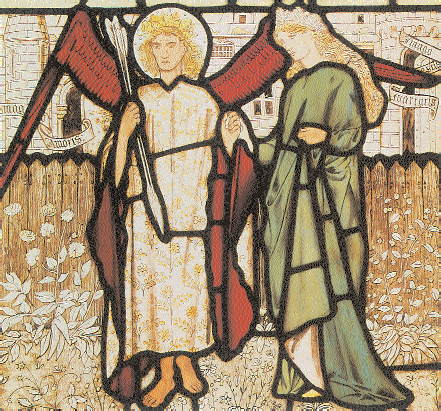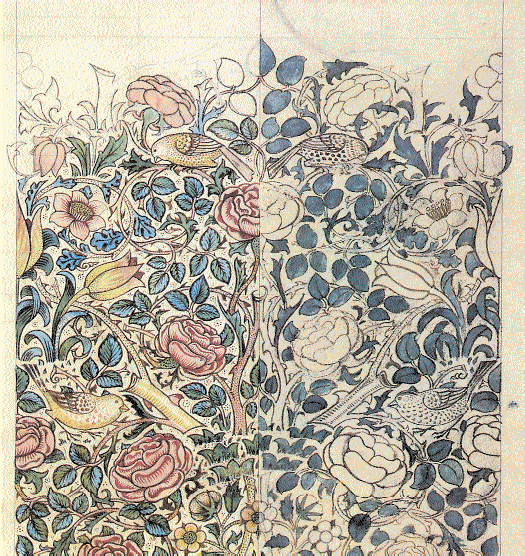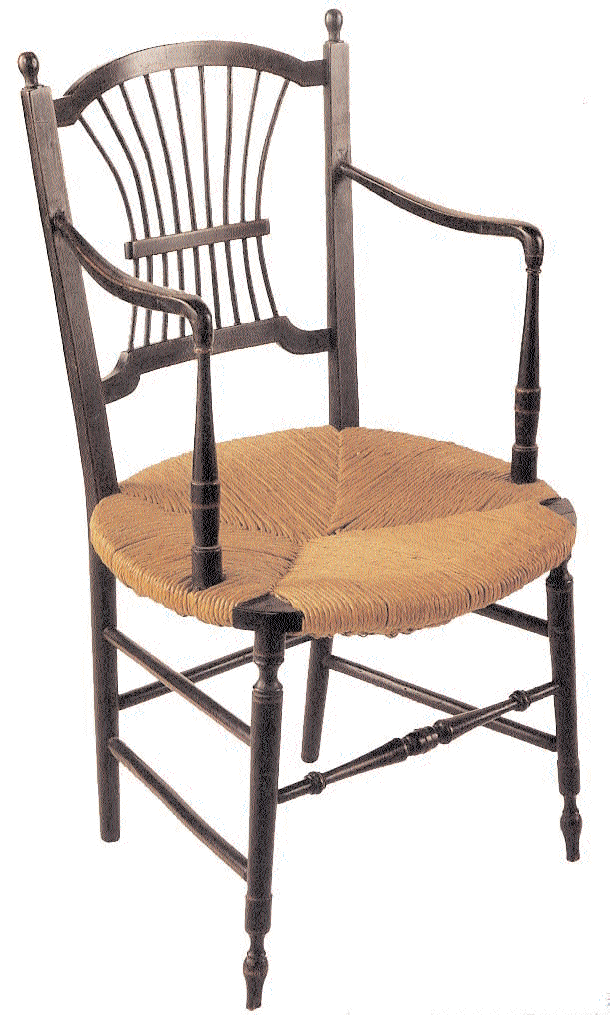William Morris: A Pattern is either right or wrong…It is no stronger than its weakest point
Exhibition: William Morris and the Arts & Crafts movement in Great Britain
Date: February 22 – May 20, 2018
Venue: Museu Nacional d’Art de Catalunya | Barcelona Spain

From the middle of the nineteenth century to the beginning of the twentieth century, we have passed through a period of aesthetic discontent which continues and which is distinct from the many kinds of discontent by which men have been troubled in former ages. No doubt aesthetic discontent has existed before; men have often complained that the art of their own time was inferior to the art of the past; but they have never before been so conscious of this inferiority or felt that it was a reproach to their civilisation and a symptom of some disease affecting the whole of their society.

William Morris and William Frend De Morgan (for the design) and Architectural Pottery Co. (for the production), Panel of tiles, 1876. Slip-covered tiles, hand-painted in various colours, glazed on earthenware blanks, 160 x 91.5 cm. Victoria & Albert Museum, London.
We, powerful in many things beyond any past generation of men, feel that in this one respect we are more impotent than many tribes of savages. We can make things such as men have never made before; but we cannot express any feelings of our own in the making of them, and the vast new world of cities which we have made and are making so rapidly, seems to us, compared with the little slow-built cities of the past, either blankly inexpressive or pompously expressive of something which we would rather not have expressed. That is what we mean when we complain of the ugliness of most modern things made by men. They say nothing to us or they say what we do not want to hear, and therefore we should prefer a world without them.

For us there is a violent contrast between the beauty of nature and the ugliness of man’s work which most past ages have felt little or not at all. We think of a town as spoiling the country, and even of a single modern house as a blot on the face of the earth. But in the past, until the eighteenth century, men thought that their own handiwork heightened the beauty of nature or was, at least, in perfect harmony with it. We are aware of this harmony in a village church or an old manor house or a thatched cottage, however plain these may be; and wonder at it as a secret that we have lost.
Indeed, it is a secret definitely lost in a period of about forty years, between 1790 and 1830. In the middle of the eighteenth century, foolish furniture, not meant for use, was made for the rich, both in France and in England; furniture meant to be used was simple, well made, and well proportioned. Palaces might have been pompous and irrational, but plain houses still possessed the merits of plain furniture. Indeed, whatever men made, without trying to be artistic, they made well; and their work had a quiet unconscious beauty, which passed unnoticed until the secret of it was lost.

Dante Gabriel Rossetti (for the design) and Morris & Co. (for the production), The Rossetti Armchair, 1870-1890. Ebonized beech, with red painted decoration and rush seat, 88.8 x 49.5 x 53 cm. Victoria & Albert Museum , London.
When the catastrophe came, it affected less those arts such as painting, which are supported by the conscious patronage of the rich, than those more universal and necessary arts which are maintained by a general and unconscious liking for good workmanship and rational design. There were still painters like Turner and Constable, but soon neither rich nor poor could buy new furniture or any kind of domestic implement that was not hideous. Every new building was vulgar or mean, or both. Everywhere the ugliness of irrelevant ornament was combined with the meanness of grudged material and bad workmanship.

At the time no one seems to have noticed this change. None of the great poets of the Romantic Movement, except perhaps Blake, gives a hint of it. They turned with an unconscious disgust from the works of man to nature; and if they speak of art at all it is the art of the Middle Ages, which they enjoyed because it belonged to the past. Indeed the Romantic Movement, so far as it affected the arts at all, only afflicted them with a new disease. The Gothic revival, which was a part of the Romantic movement, expressed nothing but a vague dislike of the present with all its associations and a vague desire to conjure up the associations of the past as they were conjured up in Romantic poetry. Pinnacles, pointed arches and stained glass windows were symbols, like that blessed word Mesopotamia; and they were used without propriety or understanding. In fact, the revival meant nothing except that the public was sick of the native ugliness of its own time and wished to make an excursion into the past, as if for change of air and scene.
To get a better insight into the life and the work of the William Morris, continue this exciting adventure by clicking on: William Morris, Amazon UK , Amazon US , Ebook Gallery , iTunes , Google , Amazon Australia , Amazon Canada , Renaud-Bray , Archambault , Les Libraires , Amazon Germany , Ceebo (Media Control), Ciando , Tolino Media , Open Publishing , Thalia , Weltbild , eBook.de , Hugendubel.de , Barnes&Noble , Baker and Taylor , Amazon Italy , Amazon Japan , Amazon China , Amazon India , Amazon Mexico , Amazon Spain , Amabook , Odilo , Casa del libro , 24symbols , Arnoia , Nubico , Overdrive , Amazon France , numilog , youboox , Decitre , Chapitre , Fnac France , Fnac Switzerland , ibrairiecharlemagne.com , Bookeen , Cyberlibris , Kobo , Scribd , Douban , Dangdang






























